Sustainable, eco-friendly travel sounds like an oxymoron. Backpackers, holiday makers, and businesspeople jet all over the world on airplanes that belch out carbon dioxide to the tune of 2.4% of the world’s total yearly emissions. Digital nomads and travel writers (myself included) encourage people to get out and travel more.
Travel to discover yourself, travel to learn more about the world, and travel for adventure. But does all this have a negative effect on the natural world? Yes unfortunately it does. But there can be ways to mitigate or lessen our impact, much like practices you may have adopted at home, work, or school.
I’ve collected the following 9 products and 1 program to help lessen your footprint while still enjoying travel. I have personally used all but one (it should be obvious which), so please let me know if you have any questions down in the comments!
1. LifeStraw Go
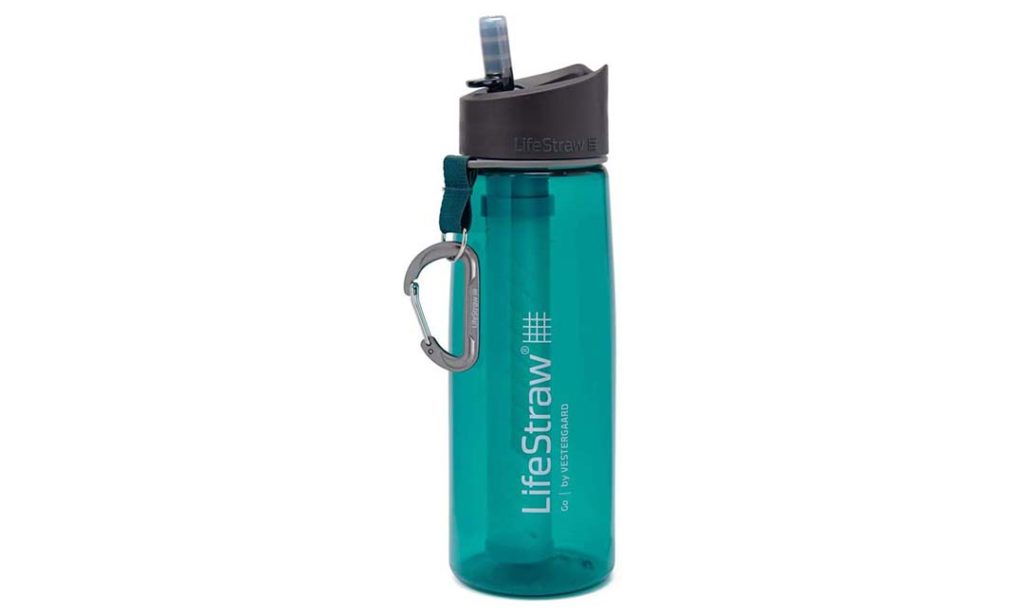
The number one contributor to waste in many locations around the world is plastic bottles – especially water bottles. Many recent places I have been, like Greece, surprised me in the inability to fill up from the tap. If you are traveling frequently and your accommodation doesn’t have water filters preinstalled, buying plastic bottles from the local store is seemingly your only option. Enter LifeStraw and their Go bottle. The makers of one of the lightest and simplest personal water filters have brought the same technology to a water bottle format. I have this and use it daily. The filter is also removable if you are filling up from a known-good source.
2. Reusable metal straw

A couple years ago it became all the rage to make a stand on refusing plastic straws. Mega corporations from McDonald’s to Starbucks switched to corn-based or paper-based alternatives and social media campaigns of celebrities urging you to “stop sucking” were everywhere. But have you actually changed your behavior? I still regularly see plastic straws in local businesses and honestly paper straws suck too. No one wants a flimsy straw melting in their drink. Here’s where metal straws are great. I have these straws and they are super helpful. Toss them in your day pack so you always have one available. I also appreciate that these come in two diameters for thinner or thicker drinks.
3. Stasher Bags

When I travel, I love eating out, but this can get expensive over time. So I look for accommodation with a kitchen when possible. I usually make breakfast where I’m staying and then dinner a few times a week. Instead of relying on leaky ziplock bags or big bulky plastic tupperware containers, these silicone resealable bags from Stasher are great for storing my leftovers. They come in a variety of sizes from tiny all the way up to giant. They are dishwasher, oven, freezer, and microwave-safe and of course are much better for the environment than plastic bags.
4. Bee’s Wrap
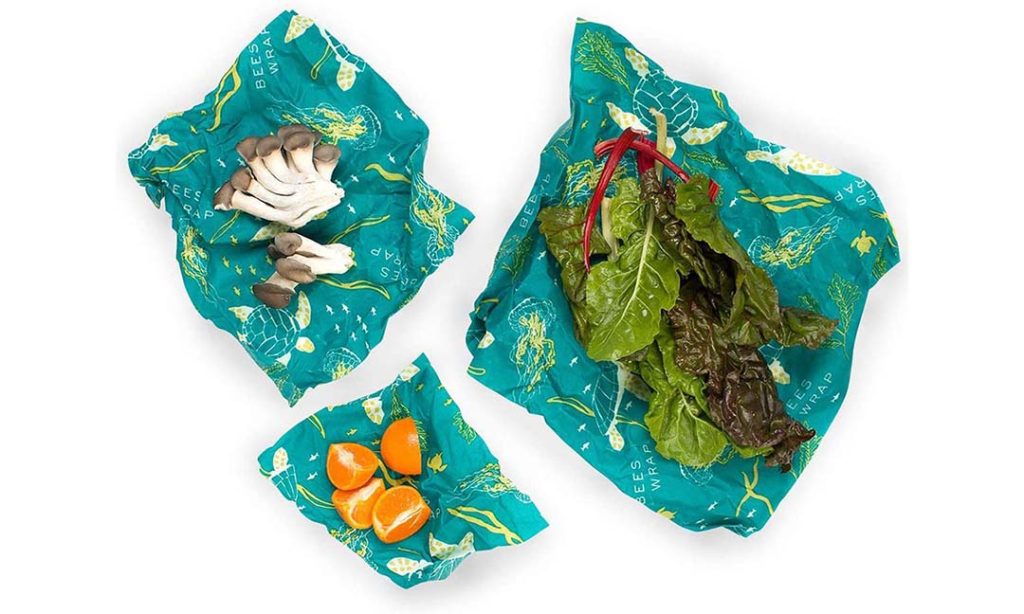
There are times where a silicone food container like the Stasher bags above just won’t do. Maybe you only ate half an avocado for breakfast, or you’ve just stored leftovers in an oddly shaped container. Reach for a beeswax natural food wrap instead of plastic wrap. I have these colorful organic cotton and beeswax wraps that I toss into my main suitcase whenever I hit the road. They can be washed, dried, and used again and again.
These do take some getting used to, from the beeswax smell to the slight stickiness. But the ability to remove single-use plastic wrap from my daily life makes these the eco-friendly choice.
5. LightMyFire Camping Spork
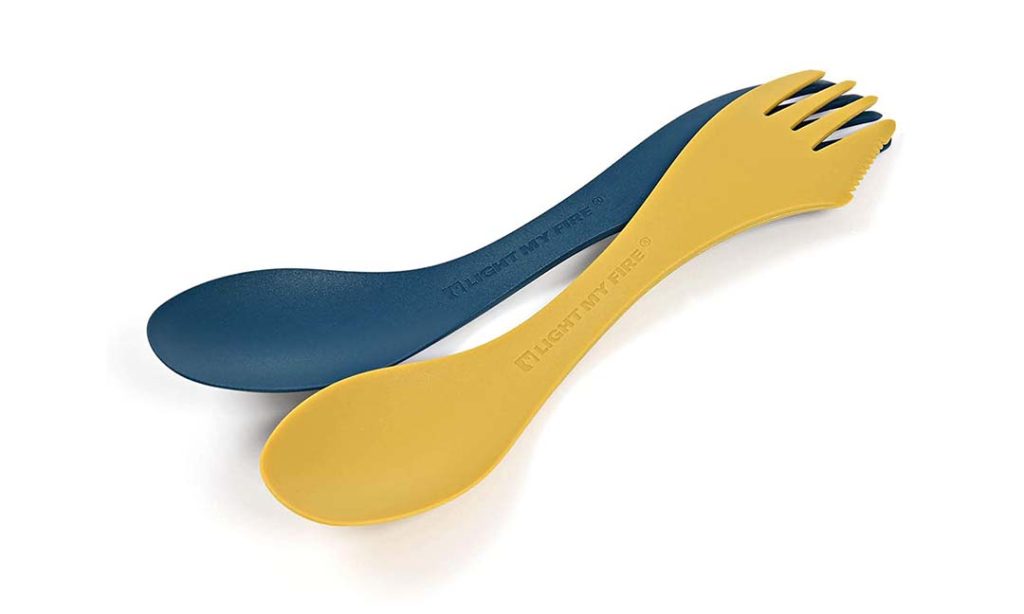
My camping spork gets frequent use when I’m on the move. I bought one years ago when I first set off on my round-the-world adventure to make sure I never had to grab single use plastic utensils. I keep mine in my carryon bag ready to use for a quick yogurt or takeaway meal. If you get takeaway food, be sure to tell the restaurant you don’t need utensils!
6. ChicoBag Reusable Shopping Bag

It is a pretty widely accepted fact that single use plastic bags are bad for the environment. But paper and cloth-based bags are of dubious eco-friendly value. According to the World Wildlife Fund, production of a pound of cotton requires over 5000 gallons of water, more than nearly all vegetables and even some meats!
Wired magazine concludes that the best bet for replacing plastic bags is recycled material. Chico Bags are made from 100% post consumer recycled materials and use 100% recycled and recyclable packaging material. Each bag comes with a handy clip and folds into a built-in pouch.
7. Bamboo Toothbrush
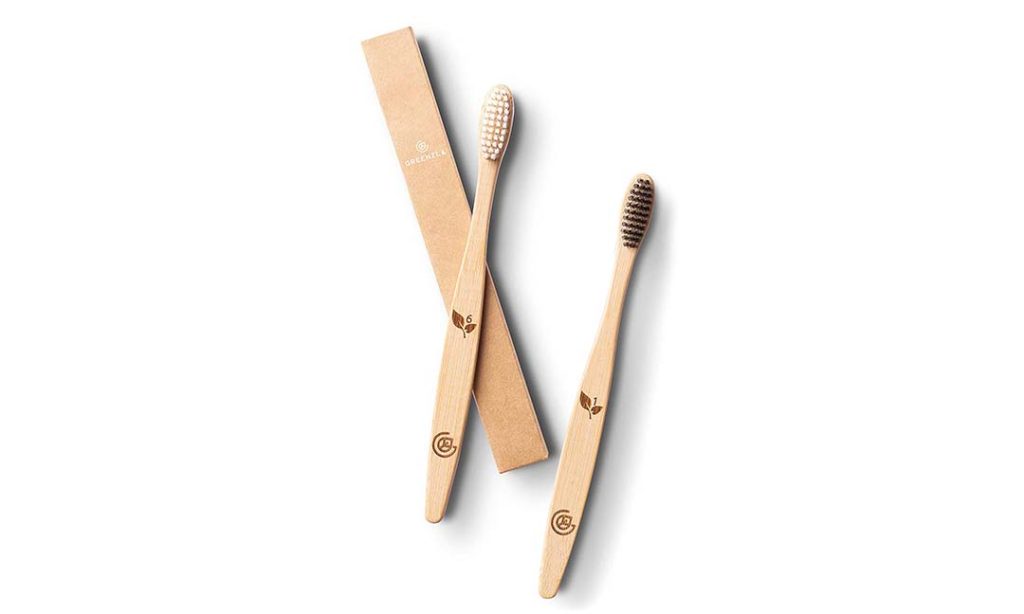
Every plastic toothbrush that has ever been created, is still in existence. They don’t biodegrade on a human timescale and according to National Geographic, more than 1 billion will be thrown away per year in the United States alone! And your plastic, propylene, and nylon brush (all of which are derived from fossil fuels) cannot be recycled because of the small size of its parts.
In recent years, manufacturers have begun introducing natural materials like bamboo and wood handles and boar’s hair bristles. Just be aware that many still use nylon-based bristles. The company I have linked to here, uses charcoal-infused bamboo bristles and are completely plastic-free.
8. Cora Menstrual Cup
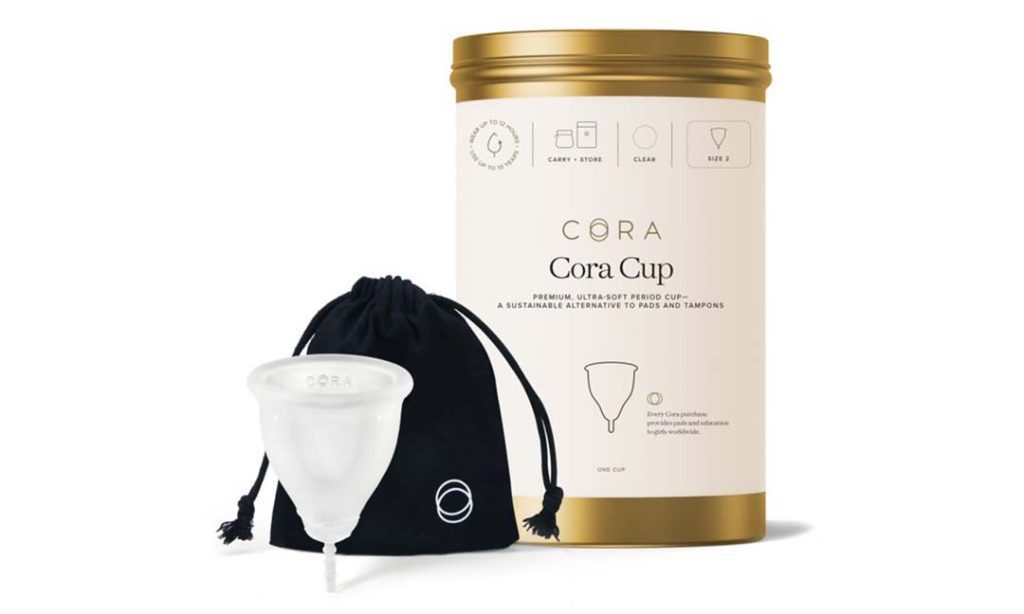
Menstrual cups are something I can’t say that I’m expert in. But I have had travel friends and partners swear by these and they definitely fit the bill on eco-friendliness by replacing tampons, their applicators, and pads. The Cora brand is the top-rated menstrual cup according the the NY Times experts over at Wirecutter. Read their review for more insight.
9. Blue Lizard Reef Safe Sunscreen
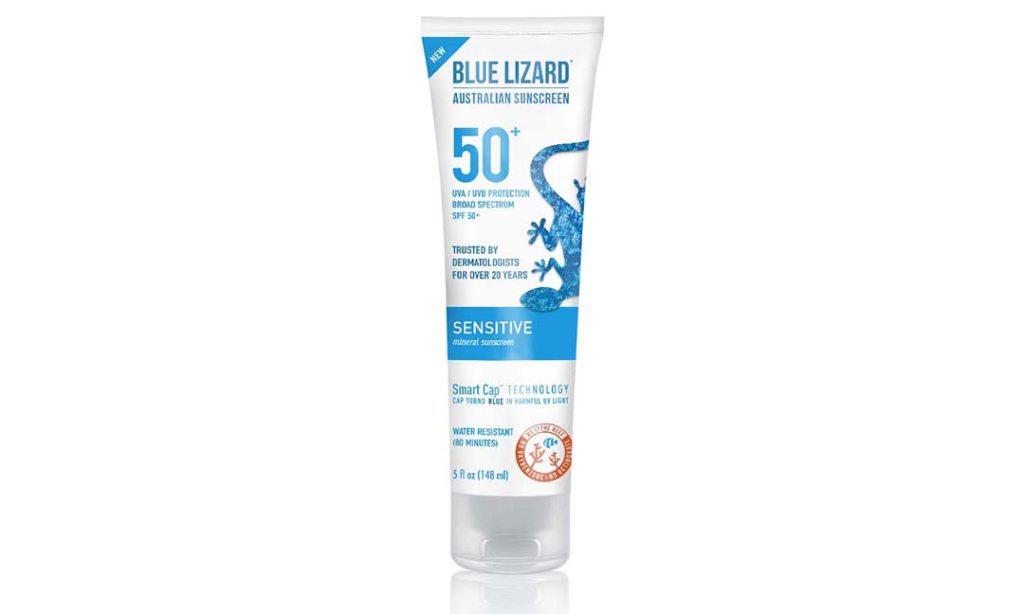
I am guilty of often forgetting to put sunscreen on when out and about. For your skin’s sake it’s best not to be like me. That said, there are things to consider when responsibly using sunscreen. When I worked on dive boats in Thailand, I had to regularly remind customers to not put on sunscreen just before getting in the water because it inevitably would wash off and end up in the ocean to be absorbed by marine species.
Most standard formulations contain oxybenzone and octinoxate which have been shown to cause irreparable damage to coral ecosystems. Instead opt for a cream, like Blue Lizard, that contains zinc or other mineral-based sun-protecting ingredients. And remember to apply at least 30 minutes before heading into the water!
10. Carbon Offsetting Program

Replacing the single-use plastics and upgrading our daily kit to be more eco-friendly is a great start. But the biggest single impact frequent travelers have on the environment is their preferred method of travel – air.
If you fly frequently, air travel likely makes up a majority of your personal carbon footprint. For many of us, removing flying altogether from our lifestyle is something we aren’t willing to do. But we can still help offset some of that negative impact by doing something positive.
Enter Carbon Offsetting. The Washington Post defines this as “a way to balance out your pollution by investing in projects that reduce emissions of carbon dioxide or other greenhouse gases in the atmosphere.” Offsets are measured by metric tons of carbon dioxide-equivalent and there are many different online calculators to help estimate your impact.
My favorite travel app on my phone is called App in the Air. It tracks all my flights, helps with day-of travel changes, logs statistics, and recently added the ability to calculate and streamline the process of offsetting my carbon emissions. If you use the app to book your flights, you can sort flights by their carbon impact and add donations on to your flight booking to offset your fare.
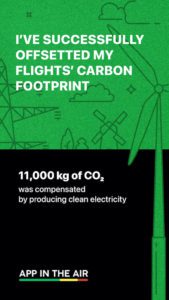
The app has analyzed my flight history since the beginning of 2020 to calculate the amount of carbon dioxide emitted at 11 metric tons! It then recommends a verified (by international NGO Verra‘s Verified Carbon Standard) environmental project. I can buy 11 metric tons of carbon offsets at the Dereli Hydroelectric Power Plant for USD$50.05 with Apple Pay all through the app. The project, in Giresun Province, Turkey, produces clean energy without greenhouse gas emissions and negates the need for polluting coal plants in the region.
Your eco-friendly responsibility
I was very surprised to see my carbon impact was 11 tons! That seems like an impossibly large number, but when I look at how much I’ve flown in the past two years and how much I had in years prior, I realized that I and I’m sure many other people are blind to their contribution.
As more people begin traveling again as the world comes out of the pandemic, it is important to realize the role we play in preserving our environment for the future. When you shop for products, choose ones that help rather than hinder. And take time to learn more about how your travel habits affect our world.
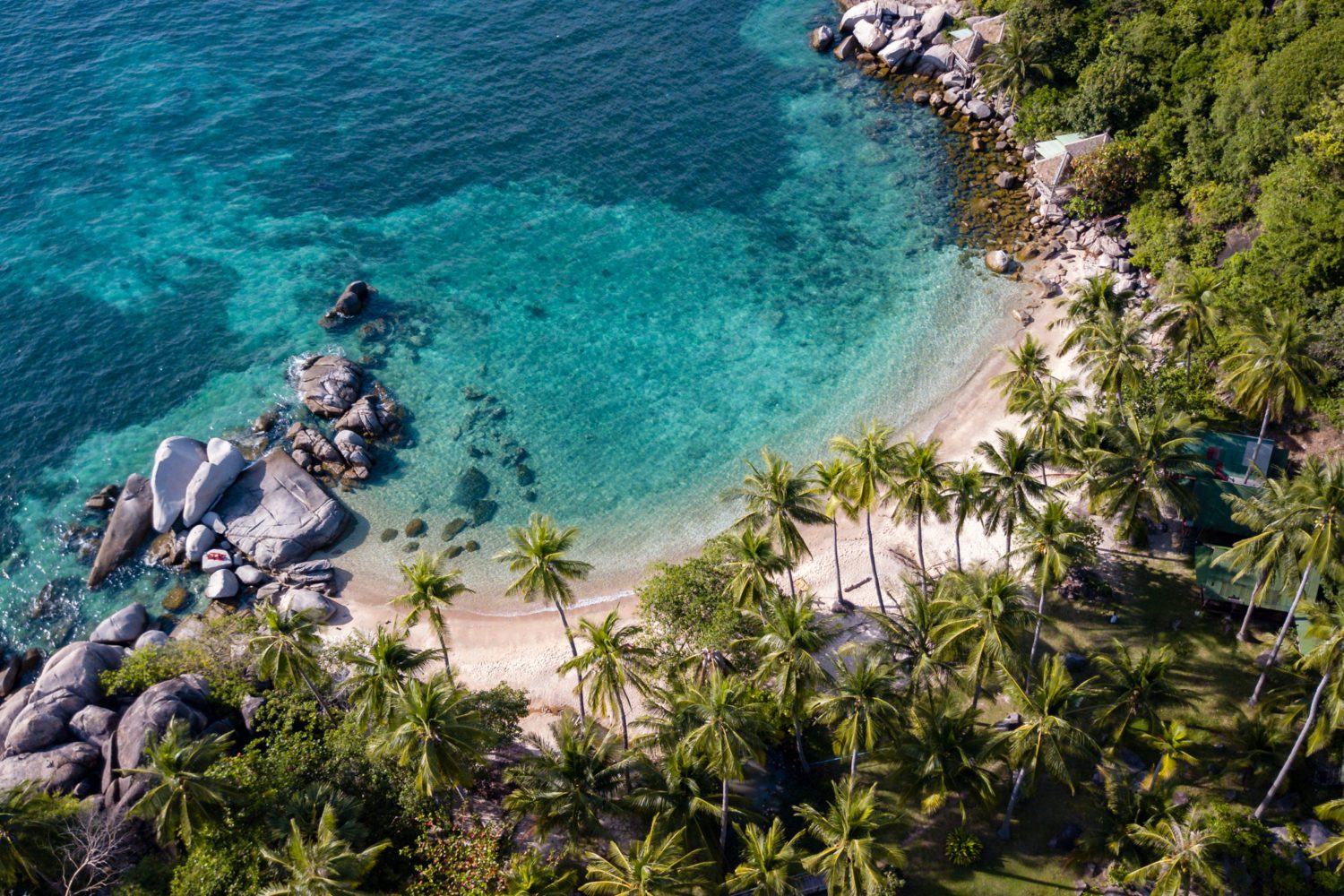
December 2, 2021
I have been researching for the water bottle, and this one that you posted looks pretty good. Have you tried any other brands? How long have you used this one? Thanks for the info!
December 2, 2021
I’ve had other travel bottles before. Had previously used an insulated one from Hydroflask. But this is the first with a built in filter that I have used.